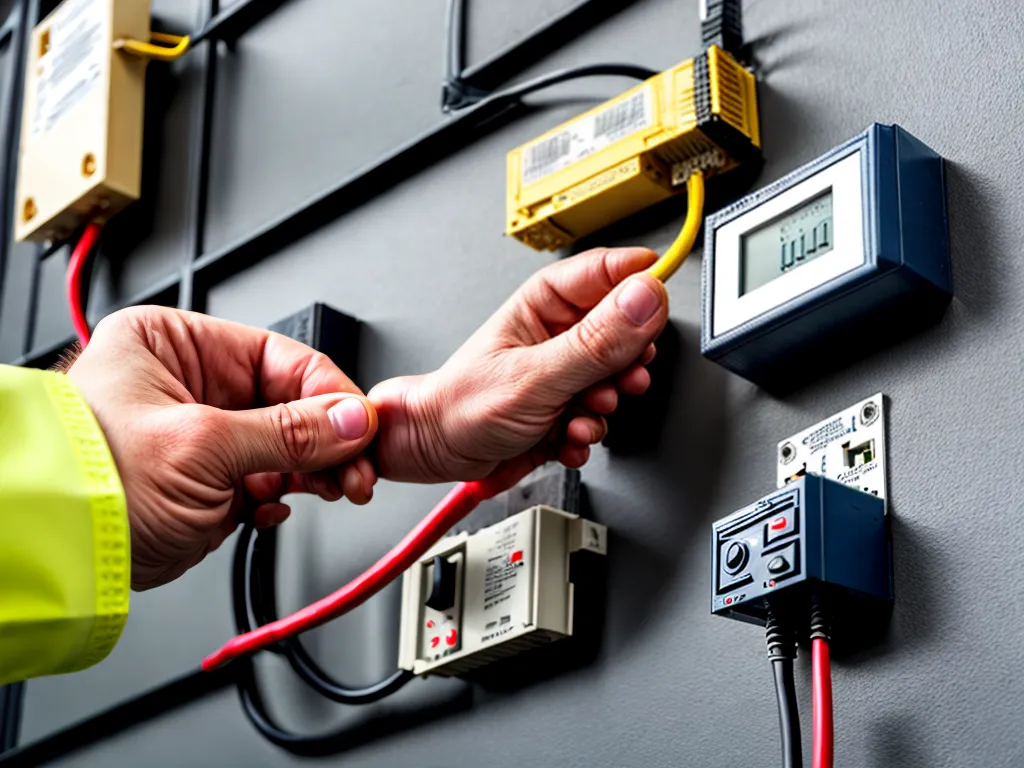
Voltage drops in commercial buildings can cause a variety of issues, from flickering lights to equipment malfunctions. As a facility manager, promptly identifying and resolving the root cause of unexpected voltage drops is crucial for maintaining operations and protecting sensitive equipment. This guide will walk you through the major causes of voltage drops and the steps I take to troubleshoot and resolve them.
Checking the Utility Power Supply
The first thing I do when voltage drops occur is check the utility power supply coming into the building. Voltage drops from the utility can propagate through the electrical system and cause issues.
To check the utility supply, I use a true RMS multimeter to measure voltage at the service entrance or main distribution panel. I check voltage on all three phases and record the measurements. If the voltages are outside the normal 120/208V or 277/480V range, it indicates a problem with the utility supply.
I also check the utility bill and meter readings for any anomalies. Sudden increases in KW demand can indicate added loads that are causing voltage drop issues. I coordinate with the utility company to have them investigate and correct any problems on their end.
Inspecting the Main Service and Distribution Equipment
If the utility supply checks out, the next place I investigate is the main service and distribution equipment, like the main breaker panel, transformers and feeders. I inspect this equipment to find any signs of malfunction that could cause voltage drops.
Some key things I look for are:
-
Loose or corroded connections - These increase resistance and impedance, resulting in voltage drops. I tighten connections and clean corrosion.
-
Undersized wiring - If the conductors are too small for the load, excessive voltage drop can occur. I check that wiring is sized appropriately for the connected loads.
-
Overloaded equipment - Overloaded transformers and undersized conductors are common causes of voltage drops. I check loads and upgrade equipment as needed.
-
Faulty breakers or fuses - These can cause abnormal voltage drop or fluctuation on the circuits they feed. I test and replace any faulty components.
Analyzing Circuit Loads and Impedances
If the main distribution checks out, I move on to analyzing individual branch circuits for excessive loads and impedances that could cause localized voltage drops.
I take current measurements on each circuit using digital clamp meters. High current loads indicate potential overloading issues that generate voltage drops under heavy draw.
To find high impedance problems, I take voltage measurements at each circuit breaker/fuse and down the run of the circuit to look for abnormally large voltage drops along the conductors. High impedance points like loose connections or undersized wiring will show larger than normal voltage drops.
I also examine circuit lengths. Voltage drop increases with wire run length. Excessively long circuit runs may need conductor gauge upsizing to compensate. I reroute, upgrade, or re-balance circuitry as needed to correct load and impedance issues.
Evaluating Motor Loads
Motors can be major contributors to voltage drops when starting, accelerating or operating under heavy loads. I pay special attention to large HVAC motors, compressors, pumps, elevators and other motor-driven equipment.
I use a multimeter to check voltage during motor startup to see if large momentary voltage dips occur. If so, the motor may need upgraded wiring or supply transformers. For motors that drive variable loads, I look for issues during peak load conditions.
Power quality recorders are useful for capturing voltage fluctuations from motor loads over time. I connect these temporarily during troubleshooting to identify problem motors. I can then mitigate through equipment upgrades or load balancing.
Coordinating Voltage Drop Corrections
Once I've identified the sources and locations of voltage drops, I work to coordinate corrections for optimum reliability. I focus first on supply-side fixes like increasing utility capacity, upgrading transformers and feeders, and rebalancing panels. This boosts supply voltage to compensate for downstream drops.
For branch circuit drops, I reroute, upsize wiring, and isolate loads on separate circuits as needed. I also educate facility managers on spreading out loads and avoiding overloading circuits.
By taking a systematic approach to inspecting the electrical system from supply to loads, I can pinpoint the factors causing voltage drops and implement tailored solutions to maintain proper operating voltages throughout the building.
Summary
- Check the utility supply voltage first during unexpected drops
- Inspect main distribution equipment like transformers and feeders
- Analyze circuits for overloads and impedances causing localized drops
- Evaluate voltage fluctuations from large motor loads
- Prioritize supply-side fixes then branch circuits to coordinate voltage drop corrections
Careful troubleshooting from the utility inlet to branch circuits allows me to keep commercial building voltage optimized and avoid operational issues from voltage drops.